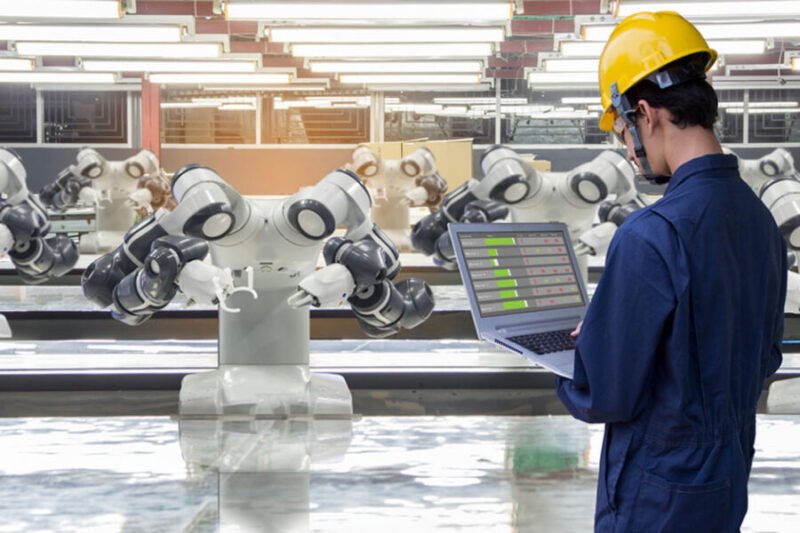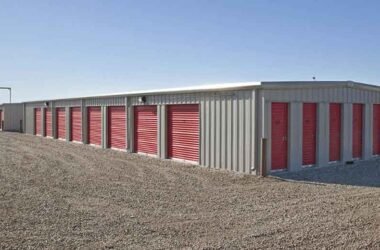Growing volume does not always mean you need more space. Most operations can push more units through the same capacity, just with better kit and a better layout. And a better kit starts with the stacker. If it can lift to the right height, handle tight turns, and dock safely at your racking, you gain minutes on every pick and put-away. That efficiency saves you a lot of time, and you’re getting more work out of each bay, meaning you don’t need to add more!
Design for flow, not for show!
Every warehouse space will look large when you first get it. More often than not, it’s going to be empty, so of course it’s going to look like there’s all the space in the world which you can organise, however. But that’s not the reality.
You may look at spaces when they’re empty, but what you envision your warehouse to be matters more. And every space looks smaller when it’s busy. That’s why you need to plan for the busy in mind. Your layout should reflect that if you want to maximise efficiency.
And how do you do that? You set one-way travel on the main aisles, place fast-moving SKUs closer to pack areas, and put slow, bulky items where travel time matters less. All of this will save you a lot of time and free up important space for you to use.
Storage that earns its space.
Racking is more important than you think. It’s your buffer, your workflow, and your safety net. And despite what the name may suggest, heavy duty shelving does more than carry weight. Adjustable beams let you dial in bay heights so you stop wasting air. Mesh backs and end guards keep smalls in place. And decking choices actually match the product, not the catalogue photo.
For example, for those of you who work with a mix of engines, tyres, and cartons, you can maximise your space by splitting zones by load type and handling method. Put small-part lanes near packing benches, so pickers don’t have to push a pallet truck for one single tray. Make each bay do a clear job and label it so the next person gets the hint without asking.
Aisle width makes all the difference!
Wide aisles feel safe and easy. They also throw away cubic capacity. Narrow aisles may feel more efficient because you can fit more aisles in the same space, but what they actually do is squeeze storage in, and only work if your machines and training match them.
Now, you know your space and your needs better, but any decision you take must be an informed one and should work in tandem with others. Decide with numbers. Narrow aisles will work if you’ve got people and equipment to match it. But if you don’t, then you’ll actually be more efficient with lesser but wider aisles.
Data that helps the floor, not just the office.
You don’t need a heavy system to see what is slow. A simple scan at pick and pack gives you timestamps. Maybe keep a whiteboard at dispatch that shows you the backlog by hour. If dwell times at the dock creep up, you can easily move labour for one hour and catch up. The thing is, your team will trust changes when they can clearly see why they are made. Which is why data should be visible and simple. If it needs a laptop and a login, it will not help on a busy Friday.
And clear decisions made on the basis of data will help your team save time, which means more efficiency, even if you have a smaller area to work with.
Why smarter kit beats a bigger box:
More square metres might seem like the easier solution when you’re looking to expand, but they come with increased rent, lights, sprinklers, and a longer walk for every job. Smarter kit shortens the walk, stacks higher, and turns tighter, so you don’t need all that additional space. You just pay for it once and collect the gains with every shift.
This way, when demand dips, you’re not paying for empty corners.
Turning tight without losing lift
In most warehouses, the pinch point is not speed in a straight line. It is the ability to turn, reach, and place in a narrow space without resetting the move. This is where a smart choice at the end of the chain changes the whole system. If your aisles are tight, if you want more pick faces without adding a bay, and if you want one truck to feed racking and work a loading area, look closely at investing in an articulated fork lift. It steers into the aisle, faces the load head-on, and places pallets without wasting seconds. What’s more, it also lets you bring aisle widths down while keeping capacity up, which means more storage in the same space!
Add clear markings and good training, and you get smooth, confident moves in places that used to feel cramped. That is how a smarter kit beats a bigger facility. Not with slogans, but with a truck that turns well, lifts well, and lets the rest of your plan do its job.








